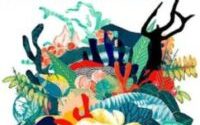Recreation – Leisure and Local Dance and Reasons Why People Dance (Primary 6)
PHYSICAL AND HEALTH EDUCATION
BASIC SCIENCE AND TECHNOLOGY
SECOND TERM
WEEK 3
PRIMARY 6
THEME – LEISURE AND RECREATION
PREVIOUS LESSON – GYMNASTICS – STUNTS ACTIVITIES (PRIMARY 6)
TOPIC: LOCAL DANCE
LEARNING AREA
1. Local Dance
2. Top Nigerian Local Dances
3. Reasons Why People Dance
4. Basic Local Dance Costumes
PERFORMANCE OBJECTIVES
By the end of the lesson, the pupils should have attained the following objectives (cognitive, affective and psychomotor) and should be able to –
1. Identify the local dance around their locality;
2. practice the various local dance steps;
3. list the customs of their local dance.
ENTRY BEHAVIOR
The pupils are required to already have learned read physical fitness..
INSTRUCTIONAL MATERIALS
The teacher will teach the lesson with the aid of:
musical instruments e.g. Drums, Gong, Pattlers or Shakers, Wooden drums, Clappers, Xylophones, etc; Pictures of dancers performing; DVDs or VCDs Recording of dances.
METHOD OF TEACHING – Choose a suitable and appropriate methods for the lessons.
Note – Irrespective of choosing methods of teaching, always introduce an activities that will arouse pupil’s interest or lead them to the lessons.
REFERENCE MATERIALS
Scheme of Work
9 – Years Basic Education Curriculum
Course Book
All Relevant Material
Online Information
Relevant links
Meaning and Importance of Recreation (Primary 5)
CONTENT OF THE LESSON
LESSON ONE – INTRODUCTION
The cultural or traditional dances of Nigerian tribes are used for so many purposes which include: unifying the members of a tribe; telling folktales or the history and traditions of a community; showcasing the wealth and strength of a tribe; celebrating; performing religious duties; entertaining and so on.
TOP NIGERIAN LOCAL DANCE
A local dance is an interesting dance. It involves body movements.
Traditional dance goes with traditional music using traditional drums and instruments.
We dance to the rhythm of the song or the beat of the instruments.
Local dances usually involves the twisting of the waist, clapping, bending the back and the knees, shaking the head and movement of the hands and legs.
Bata Dance
The Bata dance is common among the Yoruba tribe.
It involves the sharp movement of the joints of the body to the rhythm of the drum.
Koroso dance
The Koroso is common among the Fulani society.
The dance is performed during ceremonies like the marriage ceremony.
The females usually dance in a small area while the males dance to meet the females.
Atilogwu dance
This is common among the Igbo tribe.
It is a dance which needs much power. It is a dance of the youths in the society.
They come out to show their strength. It is also an acrobatic dance where dancers somersault and carry one another.
Swange Dance
The Swange dance is a recreational and entertaining dance performed together by Tiv men and women of Benue State, Nigeria.
This dance is performed in important gatherings or during festivals.
Sharo dance
It is common among the Fulani people in Sokoto State.
The Sharo dance is performed when a young man is looking for a wife.
It is also performed during a marriage ceremony.
Nkwa-Umu-Agbogho Dance
This dance has its feet among the people of Eboyin State.
The Nkwa-Umu-Agbogho dance is also known as ‘maidens dance‘ because it is specifically meant for ladies who have just become ripe for marriage.
This dance involves vigorous twisting of the chest and waist in a seductive way so as to attract suitors.
Ohogho Dance
The Ohogho dance comes from the Benin culture and belongs to certain strong and healthy age groups.
It is a religious dancer that has its dancers wearing the waist gown – ebuluku and dance in circles with gongs or bells in their hands and around a bowl with burning medicinal leaves.
It wards off evils and forms a part of major religious ceremonies.
Ekombi Dance
The Ekombi dance is peculiar to the Efik people of Calabar, Cross River state.
It is a beautiful and entertaining dance in which maidens are dressed in multi – coloured attires sewn in a mini skirt and blouse form which exposes their tummy.
Teacher’s Activities – Guides and allows the pupils to demonstrate and perform one or two based on their tribes and culture in groups or individuals.
LESSON TWO – REASONS WHY PEOPLE DANCE
1. Exercise
Get in shape while having fun!
2. Balance
You work hard… do something fun for yourself!
3. Expand Your Social Life
Meet new people with a common interest!
4. Gain Self – Confidence
Stand out on any dance floor!
5. Great Way to Spend Time With a Friend or Loved One
Need a hobby you both enjoy?
6. Improve Your Social Dancing Skills
Have fun at parties and social gatherings!
7. Relieve Stress
Take your mind off of everyday stresses!
8. Overcome Shyness
It’s time to come out of your shell!
10. Improve Your Posture
Learn correct dance technique!
11. Improve Your Memory
Memorize many dance patterns!
SOME OF THESE LOCAL DANCE REQUIRED BASIC COSTUMES
REVISION AND WEEK 3 ASSESSMENT (TEST)
As stated in performance objectives or as demonstrated and performed by the pupils.
PRESENTATION
To deliver the lesson, the teacher adopts the following steps:
1. To introduce the lesson, the teacher revises the previous lesson. Based on this, he/she asks the pupils some questions;
2. Explains the various local dances.
Pupils’ Activities – listen and respond to the teacher’s explanation.
3. Demonstrates the various local dances;
Pupil’s Activities – discuss the various local dance and practice.
4. Teacher’s/pupil’s Activities – Sings the songs/beats the drum.
CONCLUSION
- To conclude the lesson for the week, the teacher revises the entire lesson and links it to the following week’s lesson (Computer games).
LESSON EVALUATION
Pupils to –
1. name three types of local dances;
2. list costumes for the dances;
3. describe dance steps.


